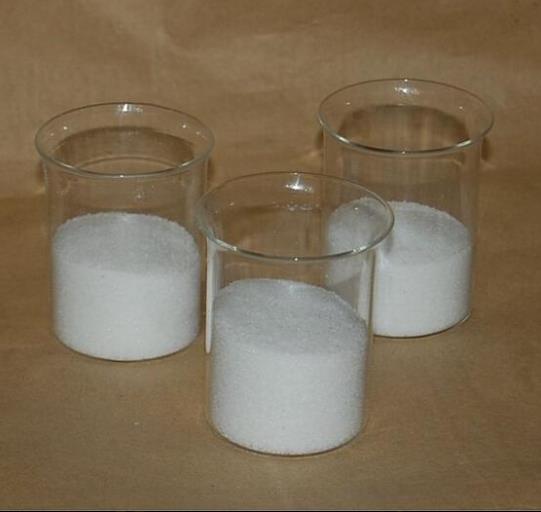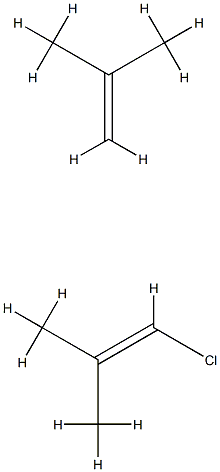Exploring polypropylene Chlorinated: Synthesis, Properties, and Applications
Apr 19,2024
Introduction
polypropylene Chlorinated, a chemically modified form of the widely used polymer polypropylene, has garnered significant attention in the field of material science and chemistry. This compound emerges from the intersection of organic chemistry and material engineering, representing a fascinating blend of versatility and utility. By incorporating chlorine into polypropylene, scientists have unlocked a new realm of potential applications, significantly expanding the utility of this already popular polymer. Given its unique properties and applicability, chlorinated polypropylene stands out as a subject of interest among chemists and industry professionals alike.

Figure 1 Characteristics of POLYPROPYLENE, CHLORINATED
Synthesis Methods
The synthesis of chlorinated polypropylene involves a process that chemically alters the molecular structure of polypropylene by introducing chlorine atoms. This transformation is typically achieved through one of two primary methods: the solution chlorination method and the gas-phase chlorination method.
Solution Chlorination Method
In this approach, polypropylene is dissolved in a solvent, such as xylene or tetrachloroethane, and then exposed to chlorine gas. The chlorination reaction is initiated and controlled by varying the temperature and pressure within the reaction chamber. This method allows for precise control over the degree of chlorination, which directly influences the final properties of the chlorinated polypropylene. Key advantages of this method include its scalability and the ability to produce a product with uniform chlorination.
Gas-Phase Chlorination Method
Alternatively, gas-phase chlorination involves the direct exposure of solid polypropylene to chlorine gas under specific conditions of temperature and pressure. This method eliminates the need for a solvent, which can be advantageous in terms of environmental impact and cost-effectiveness. The challenge, however, lies in ensuring an even distribution of chlorine throughout the polypropylene matrix.
Each method has its unique advantages and is chosen based on the desired end properties of the chlorinated polypropylene. The extent of chlorination can vary, typically ranging between 5% and 25% by weight, which significantly impacts the material's thermal stability, chemical resistance, and compatibility with other materials.
Properties
Chlorinated polypropylene exhibits a set of unique properties that make it distinct from its unmodified counterpart. These characteristics stem from the presence of chlorine atoms within the polymer chain, which imparts notable differences in both physical and chemical behaviors.
Physical Properties
Chlorinated polypropylene possesses enhanced thermal stability compared to regular polypropylene. The introduction of chlorine atoms increases the material’s resistance to heat, making it more suitable for applications that require exposure to high temperatures. Additionally, it generally has a higher density and shows changes in its mechanical properties, such as tensile strength and elongation at break, depending on the degree of chlorination.
Chemical Resistance
One of the most significant advantages of chlorinated polypropylene is its improved chemical resistance, particularly to oils, greases, and some acids and alkalis. This resistance makes it an ideal material for containers and linings in the chemical industry where exposure to such substances is common.
Compatibility and Adhesion
The presence of chlorine in the polymer chain enhances its compatibility with a range of other materials, especially polar substances. This compatibility is particularly beneficial in the field of coatings and adhesives, as chlorinated polypropylene exhibits excellent adhesion properties to various substrates, including metals, plastics, and even certain types of rubbers.
Applications
The unique properties of chlorinated polypropylene lend it to a wide array of applications, making it a highly versatile material in various industries. Its enhanced thermal stability, chemical resistance, and adhesive qualities make it suitable for specialized uses.
Coatings and Inks
One of the primary applications of chlorinated polypropylene is in the production of coatings and inks. Due to its excellent adhesion properties, it is used as a binding agent in printing inks, particularly for non-porous surfaces like plastics and metals. This makes it an essential component in the packaging industry, where durability and print quality are paramount.
Adhesives
Chlorinated polypropylene serves as a base for adhesives, especially in situations requiring strong bond strength and resistance to environmental factors. It is commonly used in the automotive and construction industries for sealing and bonding applications.
Compatibility Agents
In polymer blends, chlorinated polypropylene acts as a compatibility agent, improving the miscibility and interaction between different polymers. This is particularly valuable in the field of recycled plastics, where it helps in creating more uniform and stable blends from mixed plastic waste.
Chemical Industry
Due to its enhanced chemical resistance, chlorinated polypropylene is utilized in the chemical industry for lining storage tanks and containers that hold corrosive substances. Its ability to withstand harsh chemicals makes it an ideal material for safety and longevity.
Medical Sector
In the medical sector, its non-reactivity and resistance to sterilization processes make chlorinated polypropylene a suitable choice for medical packaging and containers.
Precautions and Safety Measures
Working with chlorinated polypropylene, like any chemical substance, requires adherence to certain safety protocols to ensure the well-being of those handling it and to preserve environmental integrity.
Handling and Storage
Proper handling and storage are paramount. Chlorinated polypropylene should be stored in a cool, dry place, away from direct sunlight and heat sources. This precaution helps in preventing any degradation or unwanted reactions. When handling, it is advised to use protective gear, such as gloves and goggles, to avoid direct contact with the skin and eyes.
Ventilation and Exposure
In areas where chlorinated polypropylene is processed or used, adequate ventilation is essential. This ensures that any fumes or vapors do not accumulate, which could pose respiratory hazards. Regular monitoring of air quality in these areas is recommended to detect any harmful concentrations.
Waste Disposal
Disposal of chlorinated polypropylene waste should be conducted by local environmental regulations. Due to its chlorine content, improper disposal can lead to environmental contamination. Recycling or incineration in designated facilities are preferred methods of disposal, reducing the environmental impact.
Emergency Response
Facilities using chlorinated polypropylene should have an emergency response plan in place. This includes procedures for dealing with spills, leaks, or exposure incidents. Quick and effective response minimizes risks and potential damage.
References
[1]Mitani K, Ogata T, Iwasaki M. Chlorine distribution and structure-property relationship of chlorinated polypropylene[J]. Journal of Polymer Science: Polymer Chemistry Edition, 1974, 12(8): 1653-1669.
[2]Blake R, Coleman J N, Byrne M T, et al. Reinforcement of poly (vinyl chloride) and polystyrene using chlorinated polypropylene grafted carbon nanotubes[J]. Journal of Materials Chemistry, 2006, 16(43): 4206-4213.
- Related articles
- Related Qustion
- Chlorinated polypropylene: Physicochemical property, Structure and Application Dec 16, 2022
Chlorinated polypropylene is an excellent adhesive with bi-directional tensile polypropylene film and plastic ink.
Supplementation with pyridoxal 5'-phosphate monohydrate can synthesize neurotransmitters such as dopamine and serotonin, maintaining a healthy nervous system.....
Nov 4,2025Biochemical EngineeringFenspiride is a drug that occupies a unique niche in the pharmaceutical world due to its versatile pharmacological properties.....
Apr 19,2024APIPOLYPROPYLENE, CHLORINATED
68442-33-1You may like
POLYPROPYLENE, CHLORINATED manufacturers
- POLYPROPYLENE, CHLORINATED
-

- 2025-11-07
- CAS:68442-33-1
- Min. Order:
- Purity: 0.99
- Supply Ability:
- POLYPROPYLENE CHLORINATED
-

- $10.00 / 25kg
- 2025-11-06
- CAS:68442-33-1
- Min. Order: 1kg
- Purity: 99%
- Supply Ability: 100
- POLYPROPYLENE
-

- $0.00 / 25KG
- 2025-08-08
- CAS:68442-33-1
- Min. Order: 1KG
- Purity: 99%
- Supply Ability: 50000KG/month






